Nyetimber
Part 2 in a series of the rise of English
Sparkling Wine
Website: www.nyetimber.com

Nyetimber is possibly the most famous of
all the English sparkling wine producers, largely because of the
reputation they built up on the first wines they made in the early
1990s. These were the first bottles that made people realize that
English sparkling wine wasn’t just good: it could be world class.
Over the years Nyetimber has grown, most significantly under the
current ownership which dates back to 2006. In 2007 the winemaking
team— Canadian wife and husband duo Cherie Spriggs and Brad Greatrix—were
brought in. I visited to taste with them, and then visited again a
few months later with some Canadian wine friends. What is going on
here is fabulous, and it is a story worth telling.
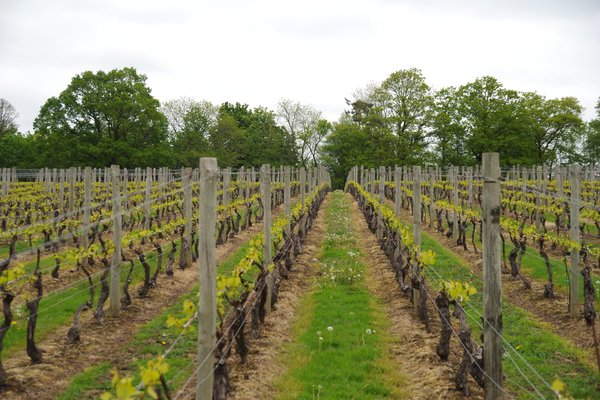
It was back in 1986 when a wealthy
American couple, Stuart and Sandy Moss bought the then 49 hectare
Nyetimber estate, exactly 900 years after it was first mentioned in
the Domesday book. Based in an idyllic part of the Sussex
countryside, it boasts a half-timbered manor house that dates back
to Saxon times. The Mosses had the vision to focus on sparkling
wine, and with assistance from Kit Lindlar, who supplied their
vines, they established the vineyard in 1988. Significantly, they
focused on Champagne varieties: Chardonnay, Pinot Noir and Pinot
Meunier. This was at a time when no one thought they could succeed
in the UK’s cold climate, and Nyetimbers original Chardonnay
plantings are the oldest Chardonnay vines in the country. Had they
taken a less risky route, then it’s unlikely that English sparkling
wine would be where it is today.
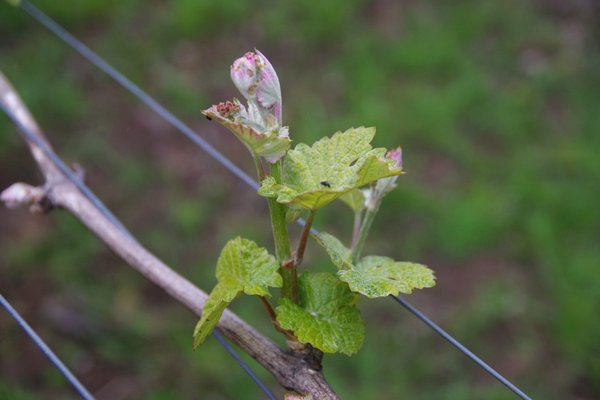
The first release was the 1992 Blanc de
Blancs, which was made at Lindlar’s High Weald winery. The 1993
Classic Cuvée followed. Both wines were brilliantly received, and
quickly Nyetimber became famous. From the first vintage until 2007,
the wines were made under the guidance of Jean-Manuel Jacquinot, a
consulting winemaker from Champagne.
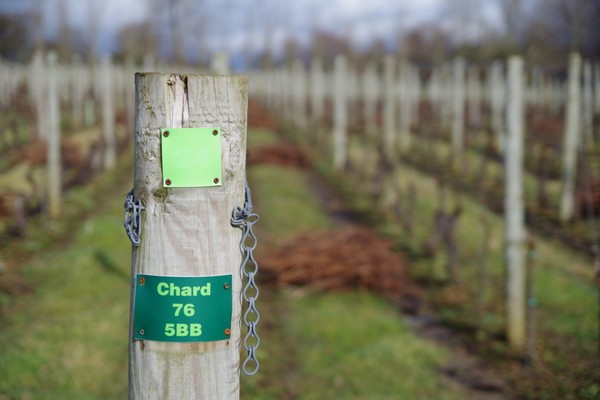
In 2001 the Mosses decided to retire and
headed back to the USA, selling Nyetimber to musician and songwriter
Andy Hill. Hill’s claim to fame (in the UK at least) is that he
co-wrote and produced Making Your Mind Up, the song that won
the Eurovision Song Contest for Buck’s Fizz back in 1981. He’s
written and produced for many other artists. Hill originally bought
Nyetimber because of the house, but then realized that the vineyard
was pretty smart, too. The big change, though, was when Nyetimber
was sold to Dutch entrepreneur Eric Heerema for £7.4 million in
2006. Heerema was already resident in the UK and had his own small
vineyard a few miles up the road from Nyetimber. He decided to
invest heavily in his new project and grew the vineyards from 16
hectares up to its current level of 150 hectares of vineyards spread
over eight sites. Six of these are on greensand, but two are in
Hampshire on chalk, both planted to Chardonnay. 2012 was the first
vintage of these chalk-based terroirs, which now account for 40% of
production here. He also appointed Cherie and Brad to head up the
winemaking, and established a modern winery on an industrial estate
in Crawley (the roads around Nyetimber are too small to make a
larger winery practical).
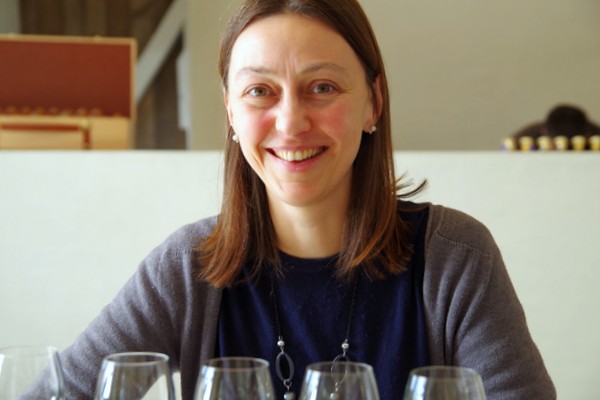
Winemaker Cherie
Spriggs
Interestingly, all the Nyetimber wines
currently on the market are from the greensand vineyards, including
the impressive single-vineyard Tillington, which at £75 is the most
expensive of all English fizzes. The wines are excellent, but Brad
and Cherie think that the chalk will add something extra. 'The
greensand brings perfume and brightness to the wines, with fruit
intensity,' says Greatrix. 'The chalk brings minerality, lime and
texture.' He adds: 'Greensand works. Nyetimber’s reputation is built
on greensand, but there will just be this extra dimension when the
Hampshire vineyards are in the blend.’
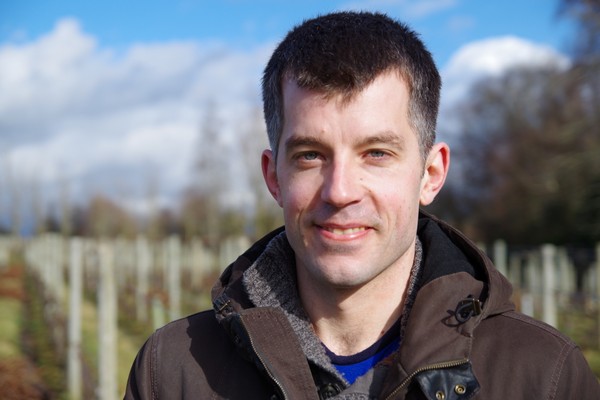
Brad Greatrix
When Brad and Cherie arrived in 2007
they inherited the 2006 base wines. ‘There were lots of different
emotions when we came in,’ recalls Cherie. ‘In the first week there
were some things that were really exciting. We were quite pleased
with the base wines from 2006 which was a warm year. But there were
other things: we felt maybe the wines weren’t being kept and treated
in the way that we would prefer.’
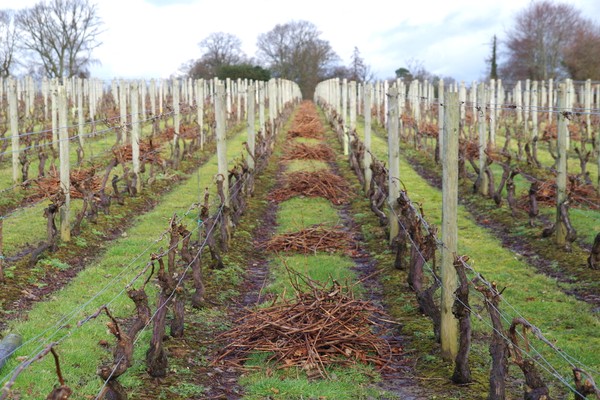
The main difference between Cherie and
Brad’s approach and that of the previous regime concerned malolactic
fermentation. From the beginning, until they arrived, consultant
winemaker Jean-Manuel Jacquinot had been calling the shots. He
pursued a no-malolactic policy, beginning with the 1997 vintage. ‘He
advised us emphatically that Nyetimber wines should be made without
malolactic fermentation, regardless of the year,’ says Cherie. ‘It
was a bit funny, because 1992–1996 were made with maloactic, and we
are in England.’
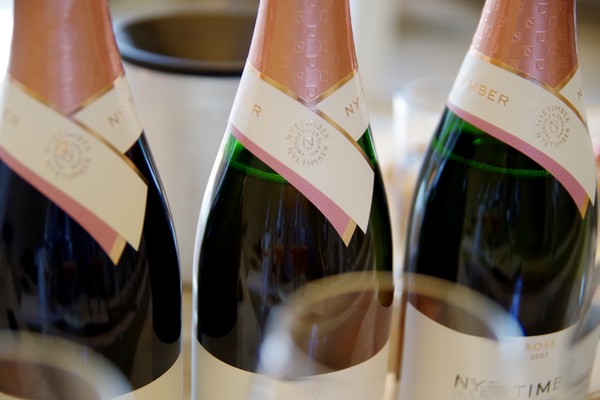
‘Every
region in the world has an achilles heel,’ she notes. ‘In England we
are a cool climate. We are one of the most northerly climates in
Europe, and coming here our thought was if you are trying to create
a wine with balance, acids could potentially be too high. So why
would you take away a natural tool, malolactic fermentation, that
would help adjusting acids to where they should be?’
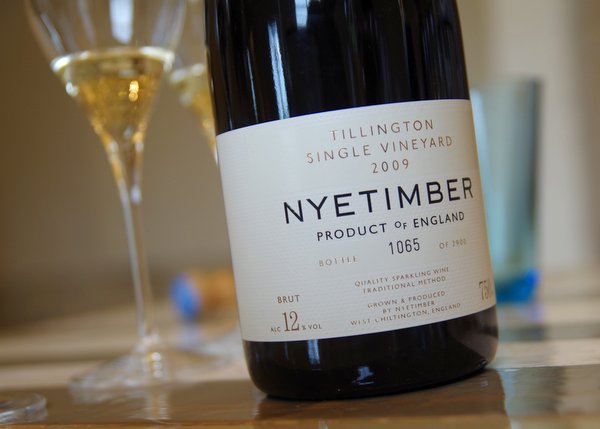
But they didn’t want to rock the boat
too much with a brand as successful as Nyetimber. ‘So in 2007 we
decided we’d not change everything straight away,’ says Cherie.
‘We’d let the harvest come and see what the grapes are like to work
with and get a good understanding.’ Then 2008 came and acids were
very high. ‘We knew at harvest that if we did not make the 2008 with
malolactic the acid would be out of balance,’ she says. ‘So we
reintroduced the use of malolactic fermentation to Nyetimber.’
Another difference with their approach
is with regards to protecting the base wines from oxygen. ‘One of
the things we found that we weren’t keen on, was that when the base
wines were kept in tank, there wasn’t a lot of concern for keeping
the tanks full,’ says Cherie. ‘Keeping them with ullage was
considered to be OK. We felt quite differently. Allowing the wine in
tank to oxidize was pushing the style of the wine in a direction we
weren’t that keen on.’
‘Sometimes
the wines might have been pushed too far towards oxidation before
they were bottled, but for us—trying to allow characters from the
vineyard to come through—this didn’t feel right. We try not to use
winemaking techniques that have a strong character that can change
the flavour profile of the wine from what we got from the vineyard.’
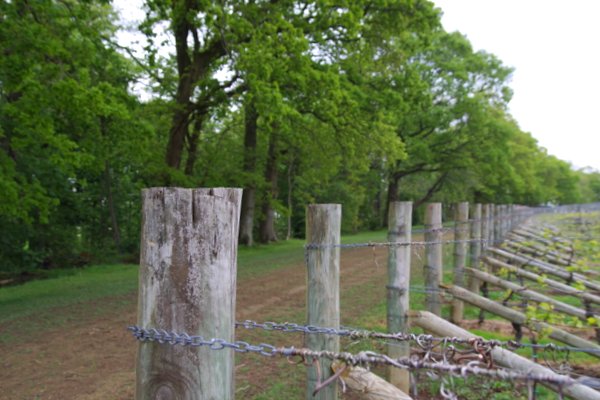
Brad adds, ‘We are one of the few in
[English] sparkling wine who own all their own vineyards. We can be
talking about blocks that are interesting and flavours that we
like—for us to squash them all with activities in the winery takes
away from one of the benefits of working at Nyetimber.’
‘There
is no doubt that there are wines that are oxidative or use oak that
are delicious, but what we are so excited about is the vineyards we
are working with and we want that to come through,’ says Cherie.
‘That’s why we are here: making sparkling wine in this country. What
you can grow in England is so exciting.’
So the 2007 is their version of the
winemaking recipe that they inherited, with no malolactic and a bit
more Chardonnay than normal to tighten things up. From 2008 onwards
malolactic fermentation has been used.
2009 was an important vintage for
Nyetimber. ‘2009 was a great year,’ says Cherie. It’s widely
considered to be a warm vintage in the UK, but this isn’t what the
figures show. ‘It is an interesting vintage in a lot of ways,’ she
says. ‘There can be the impression that in cool climates the great
vintages are the hot years. But compared with the 10 year average,
all the various characteristics of 2009 are almost bang on average.
On the one hand, to call it an average vintage does this a bit of a
disservice, because the quality of the fruit that we were working
with was amazing.’ What is important is that an average year here
results in great wines. ‘Sometimes we hear people who are more
sceptical say they might be able to make wine in a good year,’ says
Brad. ‘But 2009 proves our point.’
Of the recent vintages, 2010 was another
good year, 2011 was a tiny yielding year, and 2012 was a complete
washout. Nyetimber didn’t pick any grapes this year, and received a
barrage of criticism for putting out a press release explaining that
they were scrapping the vintage because the grapes just weren’t ripe
enough. ‘It was extraordinary,’ recalls Cherie. ‘The day the press
release came out we had phone calls asking to buy the grapes and in
the same breath saying to the press “look at what Nyetimber is
doing”. People were very unhappy with us, but we were very clear
that this was a decision for Nyetimber. We can only speak for
ourselves.’
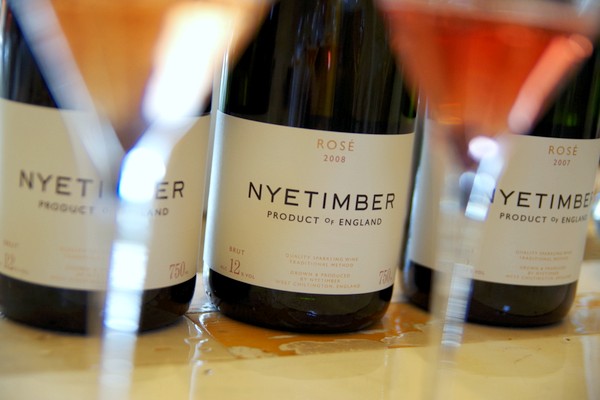
'People were
saying the reason they are not picking is because their vineyards
are riddled with rot and they don’t know how to manage their vines,’
says Brad, ‘all sorts of horrible things.’ Cherie adds: ‘the fruit
was impeccable: it was too cold for botrytis to grow.’
2013,
fortunately, is shaping up nicely as a vintage. ‘It was hard to pin
down 2013,’ says Cherie, ‘But as we approached the blending process
we just got happier with the quality we were working with.’
Yields in the UK are lower than in
Champagne. A big year for Nyetimber would be over 8 or 9
tons/hectare, which is rare. In Champagne the average is around 13
tons/hectare for Pinot and 18 tons/hectare for Chardonnay.
Another thing that has changed under the
new regime is the basis for picking decisions, and this has led to a
new wine. ‘The philosophy at Nyetimber before we joined was that the
decisions on harvest should be based on the chemistry of fruit
alone,’ says Cherie. ‘Our background from still winemaking is that
you can’t just harvest the fruit by chemistry, so we threw that rule
out of the window. In 2009 we were walking through the vineyards
tasting the fruit, and we walked through a parcel of Pinot Noir on
the Tillington site where the fruit was delicious. For all the
parcels we have we keep them separate as much as possible, and this
parcel kept standing out. By the time we hit blending this Pinot
kept coming out at the top, but there was no obvious outlet for it.’
So they created a super-premium
single-site wine, the Tillington. ‘It does need some Chardonnay
which can just hold the Pinot in check from getting too broad and
heavy,’ says Cherie, ‘and the Chardonnay from the same site was also
beautiful. So we created this blend which was 79% Pinot Noir and 21%
Chardonnay.’
The 2009 was the first release. ‘It has
been extremely well received. It is an exciting thing for us. We
made the wine in 2009 and 2010, and we haven’t made it since.
There’s a question mark over 2013. I feel that some of the
characteristics that we are getting from this site we are seeing
year on year, which is exciting.’
The big change in the pipeline is that
Nyetimber are adopting a non-vintage model for their Classic Cuvée.
‘We were interested in producing a non-vintage, but we didn’t just
want to scratch the year off the bottle, so from 2007 we have been
setting aside reserve wines,’ says Brad. ‘From tastings and trials
we felt that three back vintages was right for the style we are
interested in. 2011 was the year that we felt we had enough of a
library to do this, using 2011 as a base with 2010, 2009, 2008 and
2007 reserve wines. We have played around with the number of
vintages and the percentage of reserve wines in the blend, and we
have settled on three years and around a third reserve wines. We
won’t be bound to that.’
‘The
idea of the non-vintage was formed in 2007,’ adds Cherie. ‘The
classic cuvee is our main product and what most people know. There
is an expectation already in the market that our classic cuvee would
be the same from year to year. When the 2011 NV blend comes to
market, this is what the Classic Cuvée will become.’
The future is looking bright for English
sparkling wine, and Nyetimber are leading the field. ‘I still think
there is an opportunity to take sales from Champagne,’ says Brad.
‘There are 30 million bottles of Champagne sold each year in the UK,
so there are lots of occasions when people are spending £30 on an
experience. Why wouldn't you get an English wine?’
THE WINES
Nyetimber Classic Cuvée 2006 England
Lemony and precise with a toasty nose and some rich honey and
biscuitty notes in the background. The palate is complex and taut
with high acidity. Very lemony and showing some nice complexity, as
well as riper notes of apricot and peach. 92/100 (02/14)
Nyetimber Classic Cuvée 2007 England
Subtle herb and toast notes on the nose. Lovely detailed palate
with good acidity. Keen and lively. Tight with toast and lemon
characters, showing lovely precision and weight. Still youthful.
92/100 (02/14)
Nyetimber Classic Cuvée 2008 England
Distinctive creamy, lemony, fruity nose with some pear and apple
notes, as well as dairy and herbs on the palate. Some creaminess
here with lively acidity. Nicely rounded with apple and citrus
notes. A rounded, fruity style. 89/100 (02/14)
Nyetimber Classic Cuvée 2009 England
Lovely pure wine with delicate pear, apple and citrus fruit.
Fruity and rounded with lovely purity and balance. Harmonious with
subtle toasty notes. 93/100 (02/14)
Nyetimber Classic Cuvée 2009 England
Very pure with crisp, clean pear and citrus fruit. Hints of
white peach and subtle creaminess. Linead and focused with real
finesse. 92/100 (05/15)
Nyetimber Classic Cuvée 2010 England
51% Pinot Noir, 31% Chardonnay and 15% Pinot Meunier, spent 3
years on lees, 10.5 g/litre dosage. Lovely pure fruity style with
harmonious white peach and pear flavours and a nice citrussy finish.
There's a faint hint of cherry, too. Very delicate and pure with
lovely precision. 92/100 (05/15)
Nyetimber Blanc de Blancs 1998
England
2012 disgorgement. Mature notes of herbs, fennel and toast, and
even a bit of spun sugar. Rich pear fruit palate with some herbiness.
Bold and fruity with toasty richness. Bold and full. 89/100 (05/15)
Nyetimber Blanc de Blancs 2001
England
Very toasty peach and apricot nose. Quite rich. The palate has
herbs, mushrooms, toast and peach fruit together with aggressive
acidity. Very exotic but the acidity is too much. 86/100 (02/14)
Nyetimber Blanc de Blancs 2003 England
Lovely toast and herb notes
on the nose. Very fresh and lively on the palate with lemons and
herbs, and real precision, together with high acidity. Some
complexity here and a touch of richness, as well as tight lemony
acidity. 89/100 (02/14)
Nyetimber Blanc de Blancs 2007
England
Tight, precise, pure and lemony. Very fresh and youthful with
high acidity. Lovely precision and finesse with pear, apple and
citrus fruit. High acid, but it integrates well with the fruit.
Needs time. 90/100 (02/14)
Nyetimber Blanc de Blancs 2007
England
Distinctive toasty, herby nose with a hint of creaminess. The
palate is powerful with lively acidity. Very keen and lemony with
subtle toast and herb notes. Powerful stuff, showing high acidity.
90/100 (05/15)
Nyetimber
Blanc de Blancs 2009 England
A pre-release disgorgement. Very harmonious and pure with
precise lemon, pear and apple notes. Real harmony and nice weight to
the fruit. Potentially great. 93-95/100 (02/14)
Nyetimber Blanc de Blancs 2009
England
3% of oak in the base wines. Very pure and delicate with lovely
precision and good acidity. Nice finesse with a pristine, youthful
character and amazing potential. 93/100 (05/15)
Nyetimber Tillington Single Vineyard
2009 England
Ripe and fruity with lovely
fine, complex ripe red apple, white peach, cherry and citrus notes.
Beautiful harmony on the palate which combines concentration and
finesse. Great precision and purity here with subtle toasty notes
and some richness, but also nice finesse. Young but already pure and
complex. 94/100
Nyetimber Tillington Single Vineyard
2009 England
First vintage, 79% Pinot Noir, 21% Chardonnay. Super-fine yet
generoys with pear and white peach fruit, a hint of cherry and some
toastiness. Has generosity but also focus. Serious stuff. 94/100
(05/15)
Nyetimber Rosé 2007 England
12% alcohol. A really
distinctive wine. Quite full pink with a salmon/orange hue. The nose
is assertive with some strawberry and raspberry notes as well as
subtle toasty hints. The palate shows some strawberry/raspberry
fruit and richer toasty/brioche hints. It’s also quite grippy and
tannic, and has high apparent acidity. There’s a bit of richness,
but also some savoury austerity. Overall, it’s a dense, structured
rosé with real potential for development and great concentration of
flavour. 92/100 (01/10)
Nyetimber
Rosé 2007 England
75% Chardonnay and 11.5% red wine. Lively cherries and herbs
with high acidity and some lemon notes. Subtle toast. Precise.
89/100 (02/14)
Nyetimber Rosé 2008 England
58% Chardonnay, 15.5% red wine. Herby, leafy cherry fruit. Very
attractive with some open, ripe cherry notes. Very pretty and
distinctive. 92/100 (02/14)
Nyetimber Rosé 2009 England
45% Chardonnay, 15.5% red wine. Great definition here with
broad, complex flavours of red cherries, herbs and citrus. Subtly
spicy notes and some structure, too. Beautiful wine. 93/100 (02/14)
Nyetimber Rosé 2009 England
Full pink colour with a hint of orange. Lovely cherry and plum
fruit notes as well as pear and toast. Lovely fruit presence with a
hint of creaminess and really direct flavours. Some rose hip syrup.
Dry but generous and very pure. 92/100 (05/15)
Nyetimber Demi-Sec NV England
44 g/litre sugar. Off-dry and rich, and a little spicy with
apple and pear notes. Some melon here, with bold texture. Very
attractive. 91/100 (02/14)
See
also:
 A
video introduction to English sparkling wine A
video introduction to English sparkling wine
 Blog
posts on English sparkling wine Blog
posts on English sparkling wine
Wines
tasted 02/14 and 05/15
Find these wines with wine-searcher.com
Back
to top
|

